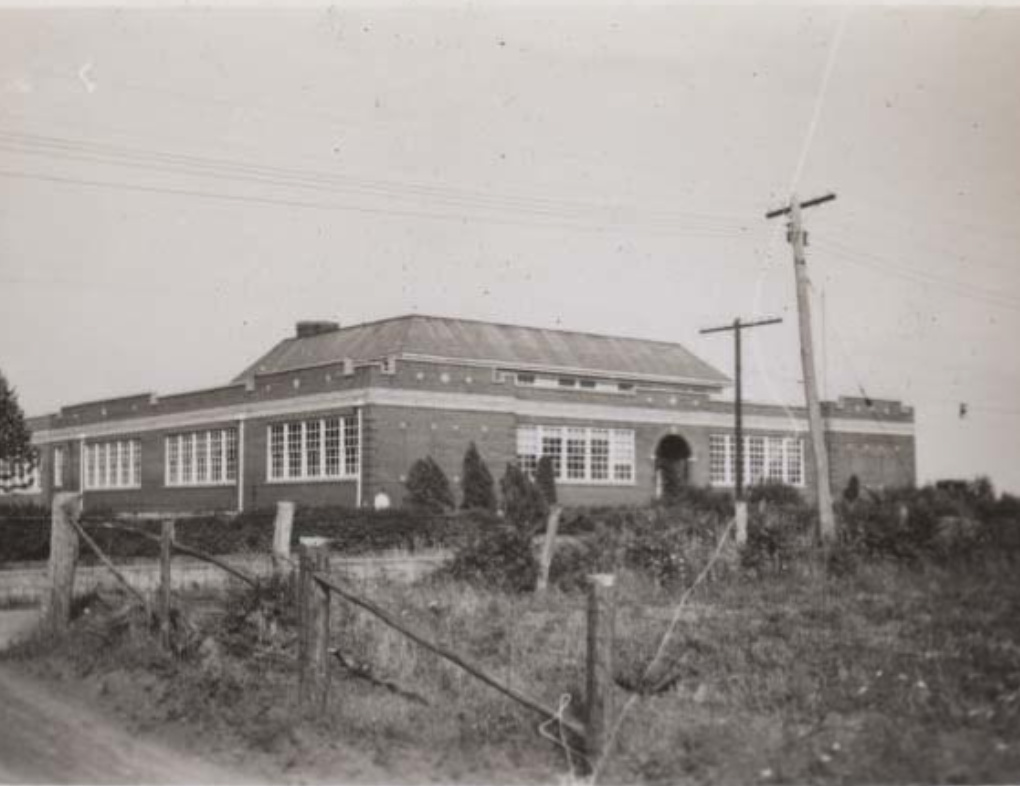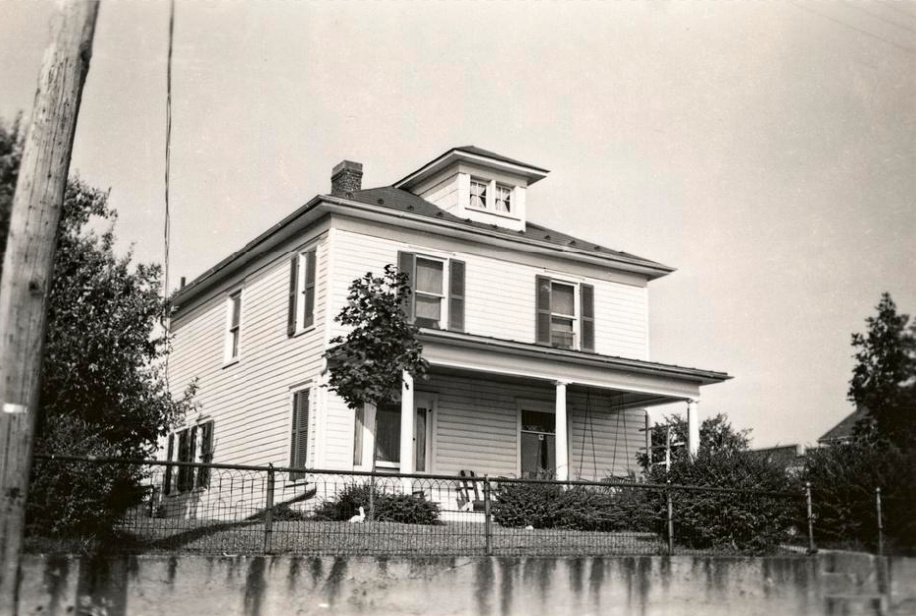Lovettsville White High School
Opening and Closing
The original land was previously owned by Peter Wire and his wife and deeded to the School Board of Lovettsville on August 27, 1886 (See deed book 9 Y’s 335). The land consisted of one acre and two roods. Recordings of the deed were made on November 18, 1886 and February 25, 1927.
In addition to the Wire property, by Deed of October 5, 1911, (See Deed Book 7 Y’s 336) Catherine M. Fry and Charles W. Fry, her husband, conveyed to William H. Frazier, George W. Virts and John S. Paxson, as School Trustees additional land. That deed was first recorded August 2, 1912 and then again Feb 25, 1927.
In addition, a third parcel of land was added in April 11, 1921 (see Deed Book 9 Y’s 339). Joseph W.B. Shumaker and Mary A. Shumaker conveys to H.L. Rodeffer, J.S. Pason and R.M. Grubb and their successors as Public School Trustees of Lovettsville Magisterial District. The deed was first recorded October 18th, 1921 and again on February 25, 1927.
Prior to the 1927 structure was a building constructed in 1886 with an addition in 1910, then altered in 1920 with a furnace and water system. We have some student records from that period, which have proved very useful in understanding early white High School education. See 6.3.4 Lovettsville (w) 1918-54.
Based on insurance files in the Edwin Washington Archives, we know that the High School structure depicted above in 1940 was constructed in 1927, with a three-room addition in 1937.
Physical and Map Location
55 E Broad Way, Lovettsville, VA 20180
Petitions
Transportation
Walking was a common method of school transportation even before the creation of Loudoun County Public Schools (LCPS). It’s believed that students who lived within 3 miles of a school could walk from their home to school. The figures at https://edwinwashingtonproject.org/s/ewp/item/31199 and https://edwinwashingtonproject.org/s/ewp/item/31203 show the locations of the schools with a circle representing the area from which students could have walked, back and forth from their home to the school. Travel by horse was also used and could have extended the travel distance.
History
High Schools in Loudoun: By 1916, Loudoun had 12 high schools for white students, and except for Purcellville, which was open for only a year, they graduated hundreds of students and remained fixtures for a decade or more. Initially, Leesburg, Lincoln and Waterford offered four years of high school, while Aldie, Ashburn, Hillsboro, Lovettsville, Lucketts, Middleburg, Purcellville, Round Hill and Unison-Bloomfield high schools offered one to three years. Blacks had limited High School classes at the Training Center in Leesburg, beginning about 1920. They would not have an accredited High School until 1940, and then Douglass was established in 1941. See Scheel, Eugene. (2003, September 21). High Schools Once Flourished Across Area. Washington, DC: The Washington Post.
We don’t know a great deal more about the building, except through an undated memo, probably written by Oscar Emerick titled “Lovettsville School Building” in folder 9.2.3. That memo was probably written in 1926 as part of the discussion that year to decide on the future of white education in the town. It did explain that the old building had a small laboratory that did not meet the needs of education. The memo also described the structure as a fire trap and “a menace to the life of the children.” “A much less violent win than that which moved the La Plate school from its foundations and destroyed a number of precious lives would demolish this building.”
Emerick called for a structure of the approximate type and size of that under construction in Lincoln, which replaced their High School, burned down in 1926. Emerick then called for increased taxes to pay off a Literary Fund loan for the school.
The School Board met on November 9, 1926 and authorized the construction of a new building of about 8 rooms and auditorium, as well as a loan of $37,500 from the Literary Fund, and other monies as needed. The matter was then put to the voters in a public forum on November 18th at 7 pm. That forum was attended by 86 people, all of whom approved the loans.
On December 14th, 1926, a delegation of citizens from Lovettsville appeared before the School Board. Oscar Emerick and Mr. Souder and Mr. Ford were appointed to appear before the Board of Supervisors in December to lobby for the initiative.
Following that, according to the Times-Mirror on December 16, the Board of Supervisors was then to take up the matter of the construction and loan on December 27, which it did, as part of the budget for the County School Board for the fiscal year beginning July 1, 1927.
Construction of the 1927 Structure:
On March 14, 1927, a contract was made by the School Board with Earl Poston as contractor to build the new school house. Records in the Edwin Washington Archives have many details of the plans, including the original contract. On March 11, 1927, the School Board also contracted with the Butler Electric Company.
Addition of 1937
A three-room addition of brick and tile was completed in September 1937, in coordination with Raymond V. Long, Director of School Buildings at the State Board of Education. We have in the archives a significant amount of material on this matter, including bids for construction and conversations between Oscar Emerick and the State Board of Education.
There was a significant exchange of conversations with Richmond on this, often of a technical nature, eg. the heating was a major problem, due to the decline in the boiler (letter of Oscar Emerick to Raymond Long of Feb 12, 1937) and response by Mr. Long of February 13th.
Richmond wanted to be certain that the addition was done properly, so a delay in approval was encountered until Long’s people came to Loudoun. Emerick then reported on April 22 that he had acquired an appropriation for the addition and asked that Richmond agree to plans ASAP. Emerick also wanted proper fire extinguishers to be placed in all schoolhouses and asked for advice on the proper number.
Emerick wrote to Long on April 26th, agreeing to Richmond’s plans, which had been submitted on April 23, with minor adjustments, one of which was not to be required to install new slate blackboards. Instead, he wanted to use good-condition blackboards from closed school houses, to save money.
The contractor for the addition was L.J. Keller and Sons of Jefferson, Maryland.
An interesting development was the use of wheeled scoops from the Convict camp at Wheatland. As often happened in other construction projects, there were also problems, as late of 1938. The boiler was priming badly and water mains were not working properly. Also in 1938, the contractor accidentally broke a playground slide, which had to be replaced.
Built in 1934, this was an ordinary, one story, one room, detached frame building on a stone foundation with metal roof. The structure was lit with electricity and heated by a stove, the flue to which was of standard construction. The shop was approximately 41’x21′ and situated approximately ninety feet N of the high school building. In 1940, the shop was considered to be in good condition and was insured for $700.
Constructed in 1922, the Teacherage was a two story, frame building on stone foundation with metal roof, of usual dwelling construction and lit with electricity. It contained six rooms and was furnished with water and equipped with the usual plumbing fixtures necessary to the occupancy. The Teacherage was approximately 25’x31.5′ with a one story addition of 12’x12′. The porch on the front was approximately 21’x8′. The building was exposed on the north side by a frame, approved roof dwelling, situated at 30 feet distance. Address was 55 E Broad Way, Lovettsville, VA 20180. Principal of Lovettsville HS also used this as his residence. See Times Mirror: September 7, 1939, page 1. “Womeldorph Starts 20th School term in Lovettsville High,”
In 1940, the Teacherage was in excellent condition and insured for $3500.
The cottage was up for sale in 1955 for $8500, though could be purchased for $6500. Loans were also possible. See Emerick, O. (1955, July 27). Letter to Mrs. Marie F. Shockey of Knoxville, Maryland. Leesburg: LCPS.
1939: The acreage for Lovettsville HS was increased from one to 4.5 acres. Enrollment had also increased from 30 to 70. 154 students graduated in 19 year period. Faculty increased to 11. In addition, a principal’s residence was added adjacent to the property. Source: Loudoun Times Mirror: September 7, 1939, page 1. “Womeldorph Starts 20th School term in Lovettsville High.”
Instructors
Insurance and Physical Location
Based on insurance files in the Edwin Washington Archives, we know that the High School structure depicted above in 1940 was constructed in 1927, with a three room addition in 1937. It was an ordinary joisted, one story, detached brick building with composition and slate roof, on concrete foundation. It contained twelve classrooms and two small rooms, as well as an auditorium. The rear portion of the building contained a basement, in which there were also classrooms, therefore that section was equivalent to a two story building.
The auditorium portion was also equivalent to two stories, as it extended above the roof of the other part of the building, which extension above the roof was of frame construction with a slate roof. The building was lit by electricity and heated with a low-pressure steam heating plant. It was also furnished with water and equipped with the usual plumbing fixtures necessary to the occupancy. In 1940, the building was considered modern, in excellent condition and was insured for $42,000.
1922 Frame Teacherage cottage was contructed at a cost of $5000.
1927 Brick Lovettsville Structure of 7 rooms was constructed for $37,500.
1934 Frame Agricultural structure was constructed for $500.
1938 Brick Addition of 4 rooms was constructed for 16,000.
Curriculum Highlights in 1918.
Found in 6.3.4 Lovettsville (w) 1918-54
1918: Emerson reader for modern English literature. Also Metcalf’s English and American Literature. Julius Caesar, Silas Marner, Pilgrim’s Progress, Merchant of Venice, House of Usher, Washington’s Farewell Address, Autobiography of Franklin, tale of Two Cities, Lady of the Lake, Midsummer’s Night Dream, Deserted Village, Vicar of Wakefield, House of Seven Gables, Sir Roger De Coverley, McBeth, Burke’s Speech on Conciliation, Ivanhoe, Milton’s minor poems, Idylls of King. Moore and Miner: Business Arithmetic, Well’s Essential of Algebra and Plane Geometry, Farr’s New Physical Geometry, Warren’s Elements of Agriculture, Miss Conley’s Principles of Cooking, Snyder’s First Year and Clark’s General Science. Redway’s Commercial Geography. Webster’s Ancient History, Chegney Short English History, Andrew’s American History, Forman’s Advanced Civics, Mrs. Munford’s Attitude Toward Slavery, Bennett’s Latin Grammar.
The Munford discussion is likely based on the book Virginia’s Attitude Toward Slavery and Secession. It is interesting that the discussion is labeled Mrs. Munford. Beverley Munford was a man, though it was his wife (then a widow) who advanced the book. One of the attitudes of the book was that Virginia didn’t leave the union in order to preserve the institution of slavery. Unfortunately, the substance of the lecture and any essays related to it have been lost over time.
See
- Virginia’s Attitude Toward Slavery and Secession. By Beverley B. Munford. (New York: Longmans, Green & Co., 1910. Pp. xiii, 330.)
- Bernard C. Steiner
- Journal: American Political Science Review / Volume 5 / Issue 3 / August 1911
- https://doi.org/10.1017/S0003055400008601
- Published online: 02 September 2013, pp. 484-485
- Print publication: August 1911
Additional Photos


